Three Months in Arizona as the First NEURUS Student from Corvinus University of Budapest
In July 2022, I became the first student from Corvinus University of Budapest to be accepted into the NEURUS Fellows Program. During the one-year research program, I spent three months in the Phoenix metropolitan area as a visiting student at Arizona State University (ASU). When submitting my research proposal for the application, it was essential that my chosen topic align with my research field, the focus of the NEURUS Program, and be relevant to current issues in the state capital of Arizona. Since the 1970s, the population of the Phoenix metropolitan area has grown exponentially, while the region has become a symbol of the American car-dependent suburb. With climate change gaining increasing attention globally and in various international agreements, I was curious about how these sustainability efforts and considerations were influencing urban development in the Phoenix metropolitan area. To what extent are these efforts facilitating the implementation of environmentally sustainable, higher-density, mixed-use developments in one of the least sustainable cities in the world?
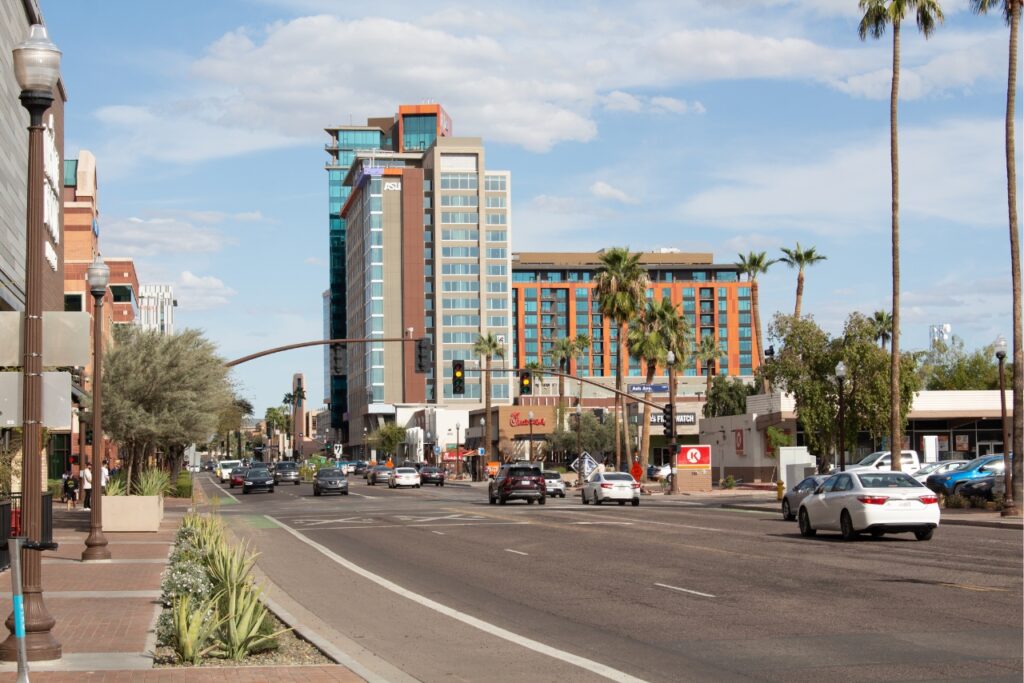
The City Center of Tempe, home of ASU
After the announcement of the results, my first task was to refine and detail my research plan. Every European and American student must present their current research plans to the program’s faculty at the NEURUS research seminar held in September. Each year, a participating European university hosts the September research seminar. In 2022, the students were welcomed by the Vienna University of Economics and Business (WU). The research seminar not only provided a great opportunity to present my research plan to the faculty involved in the program and gather valuable feedback but also to meet the European and American students who were accepted into the program the same year. In Vienna, on the morning of the first day of the research seminar, while trying to find where exactly I needed to go on the WU campus, I happened to ask for directions from the very student who was conducting his research in Vienna as an ASU student. Thus, we immediately had a shared topic, and during my four-day stay in Vienna, I had many conversations with Bryan, who has since become a good friend. Between September and February, both Bryan and another ASU student, Devynn, visited Budapest with their friends on a couple of occasions, so I was able to show them around the capital. Likewise, in December, I traveled to Vienna for a few days to meet up with them.
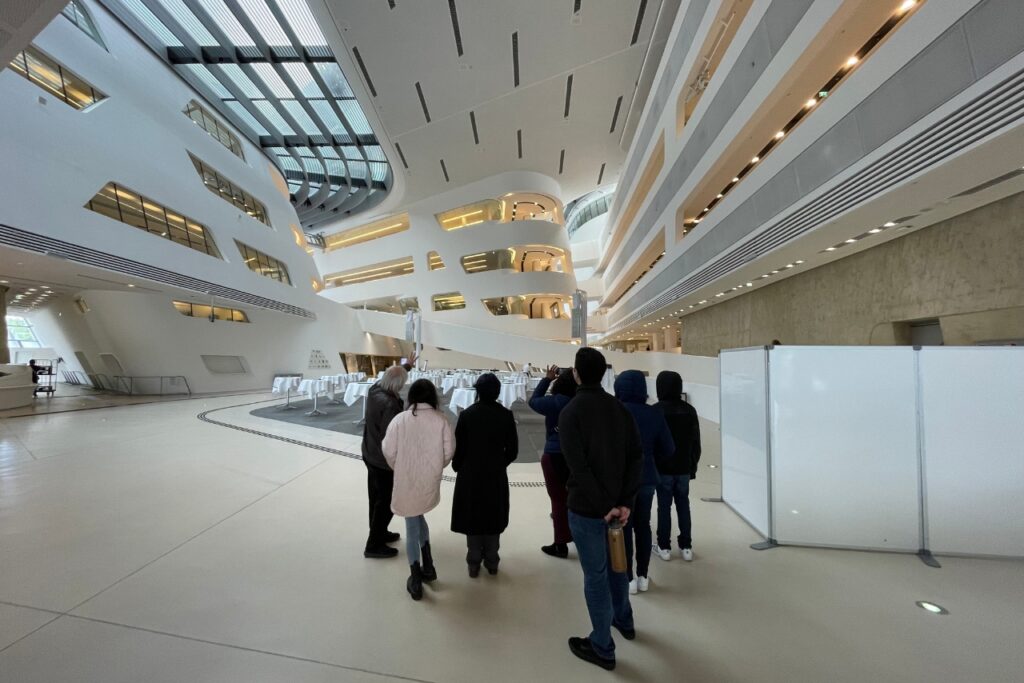
Visiting the campus of WU
The following period was spent preparing for the January-February departure, continuing the literature review essential to the research, now armed with the advice of NEURUS faculty. I received a lot of help from the NEURUS coordinator at BCE, Professor János Balázs Kocsis, and the NEURUS ASU coordinator, Sara Meerow. After numerous email exchanges with ASU, I received the university’s official approval in December, confirming they would host me, and the events sped up after that — only then could the actual visa process begin. My girlfriend, who accompanied me on the three-month trip, was a huge help in organizing the trip. Although we had been searching for accommodation with increasing effort since September, the process was complicated by the fact that we didn’t know exactly when we would arrive due to the visa uncertainty, and also because landlords typically advertise rental apartments only 1-2 months in advance. Another challenge was that the apartments advertised by property management companies were usually rented unfurnished for a minimum of six months, and without a Social Security Number (which is roughly equivalent to a Hungarian social security number), it was impossible to rent from them. Due to this, we could only search for private rentals through Facebook groups, where many listings were unreliable. Bryan, who returned to Arizona in December, was a great help in our search for accommodation, as he could personally check out the apartment we had chosen, ensuring that everything would be fine with the rental. By mid-January, we had secured our accommodation and my visa, allowing us to purchase tickets for our February 25 departure.
We arrived in Tempe on February 26, and in the following days, I began my research, which was primarily based on expert interviews with planners. Unfortunately, my initial email inquiries to planners were not very successful, so I sought help from Sara, Bryan, and one of the ASU faculty members. Bryan was an active member of the university’s student organization focused on urban planning, so he had many connections with planners. Hue-Tam Jamme, one of the ASU faculty members, suggested that I contact the university’s alumni center, which could distribute my interview request to alumni who were working as urban planners in the city. She also advised that I could supplement the results of my interviews with the creation and analysis of maps, highlighting the extensive downloadable map data available for American cities. The alumni center was very helpful and sent out my call for interviews to the relevant planners within 1-2 days. After that, I began receiving many emails from planners, and in the end, I conducted 11 interviews and attended a public forum. These were well complemented by my map data analyses and field visits.
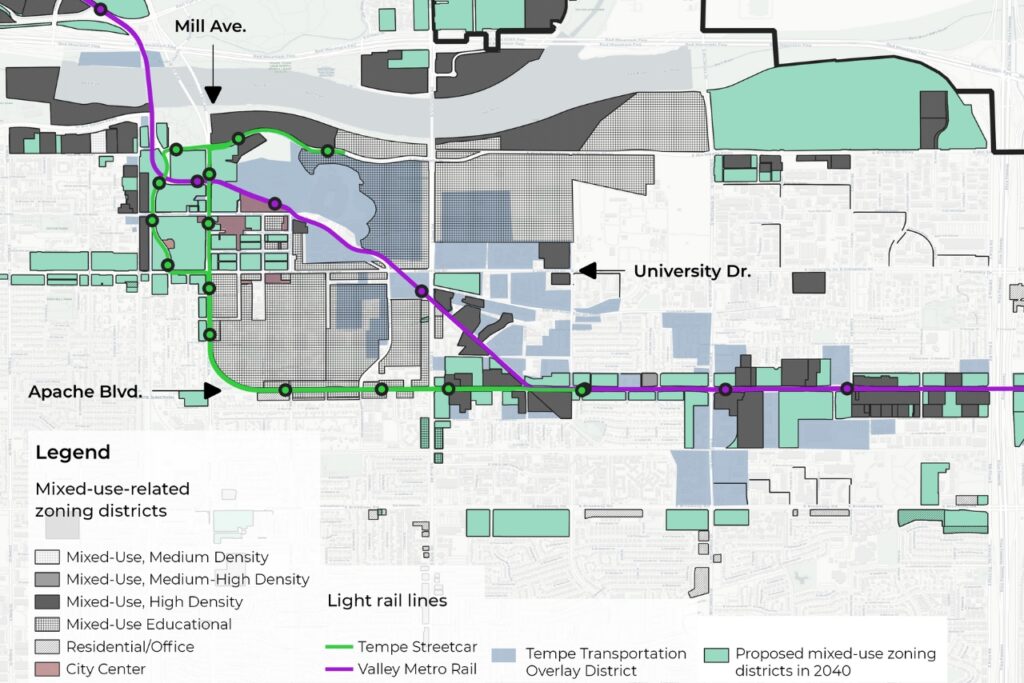
One map made during the research
Source: Tóth, B. Z. (2023) Mixed-Use Developments in Phoenix and Tempe, Arizona: Sustainability Concerns and Current Trends. Folia Geographica, 65(2), 53-77.
During the three months I spent in Arizona, I worked a lot, but there was also time for travel — Arizona’s relative proximity to many attractions provided great opportunities. We visited places such as San Diego, Los Angeles, Las Vegas, San Francisco, and New York, and we were fortunate enough to visit several national parks as well. During our time there, we met up with Bryan multiple times, who introduced me to his friends and even invited me to a meeting where we visited local planning firms, which further helped my research and expanded my network.
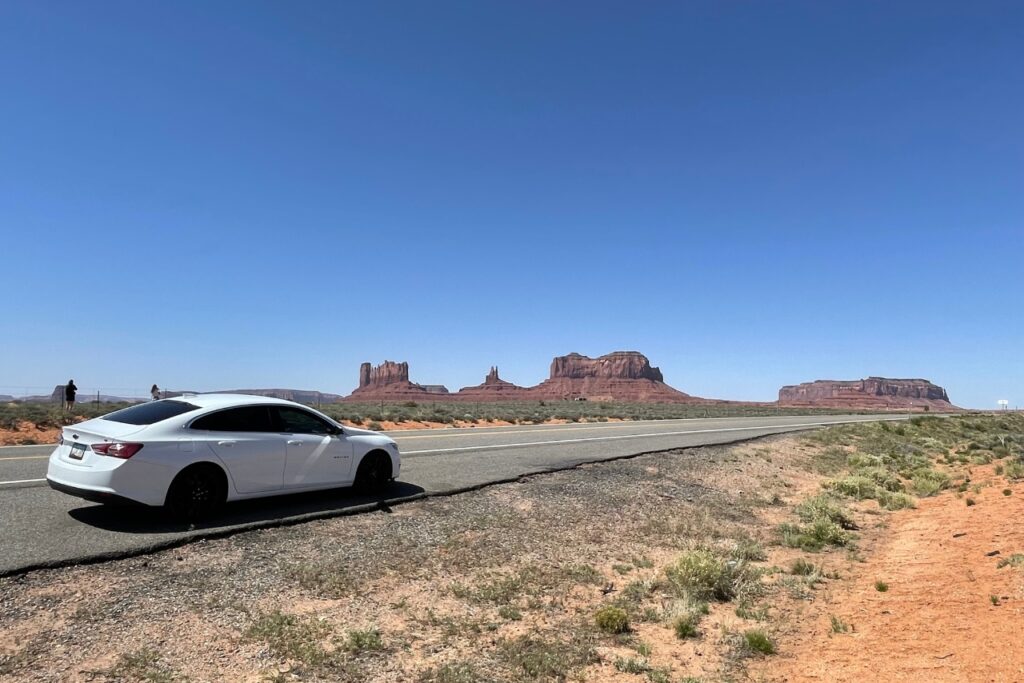
With our rental Chevrolet Malibu in the Monument Valley
In mid-April, the NEURUS Program’s spring seminar was held in Seattle, where I presented mid-term results. By this time, I had conducted several expert interviews, and the potential research outcomes were beginning to take shape. The presentation went very well again, and I received further guidance and advice from the program’s faculty regarding the continuation of my research. Our four-day trip to Seattle also featured one of the biggest adventures of the three months. Professor Kocsis accompanied me to Seattle, where we met. On the last day of our stay, we planned a day trip by car to the filming location of Northern Exposure and Mount Rainier National Park. The problems started when the engine of our rented car began making strange noises, and half an hour later, the small Kia broke down on the side of the road. The United States is not known for having 100% mobile internet and cell coverage on its highways, but we were lucky enough to reach a tow truck, which took us back to Seattle, two and a half hours away. Looking back, I wouldn’t say I missed the excitement, but somehow it was more fun sitting in the back of a giant Ford pickup on the way back to the city.
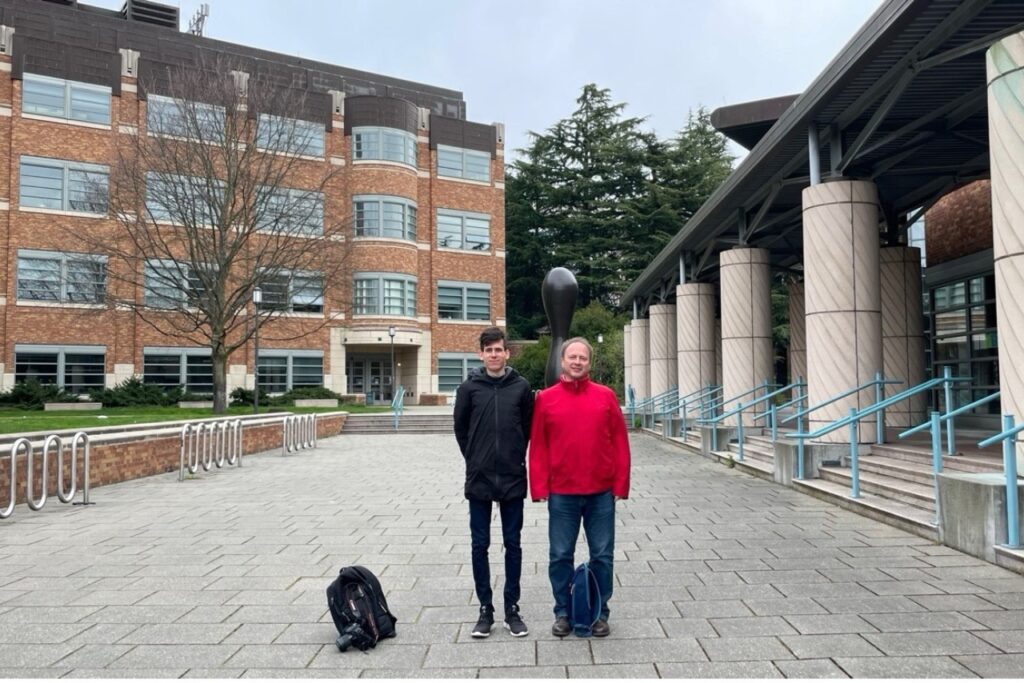
With János Balázs Kocsis, NEURUS coordinator at BCE on the campus of University of Washington
As my three-month study trip neared its end, the true, valuable, and original results of my primary research became clear. Upon returning home, I immediately began working on a manuscript, which, to my great fortune, I managed to publish in 2023 in the Q2-ranked journal Folia Geographica. I have since presented my findings as a guest speaker at the National Conference on Urban Studies and at the Junior Conference of the Hungarian Society for Urban Planning.
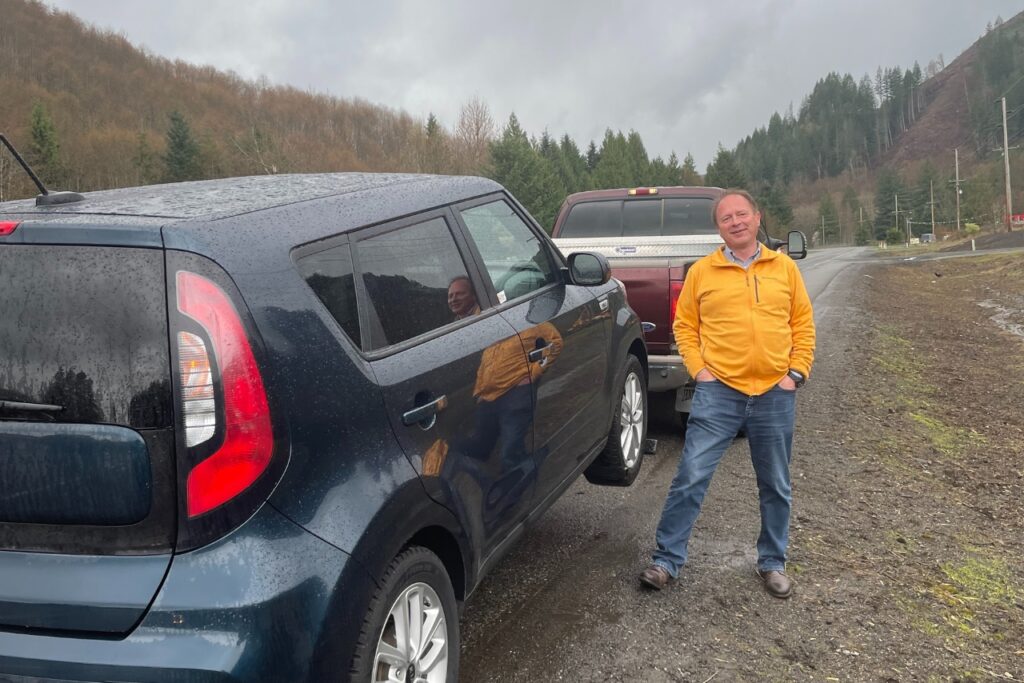
Professor Kocsis and our rental on the way back home two and a half hour from Seattle
Throughout the year of the research program, I met many new people, gained a wealth of experience, and learned even more. I might have eventually visited the United States as a tourist without the NEURUS Fellows Program. However, the same experiences, connections, friends, and opportunities, along with being able to say, “I studied at Arizona State University,” were only made possible by NEURUS.